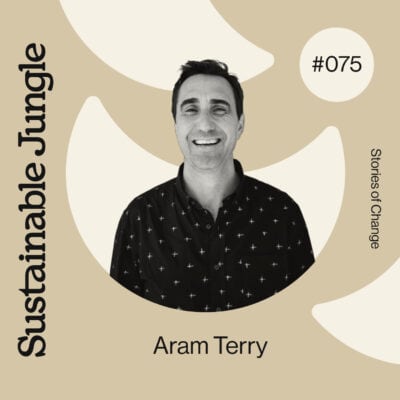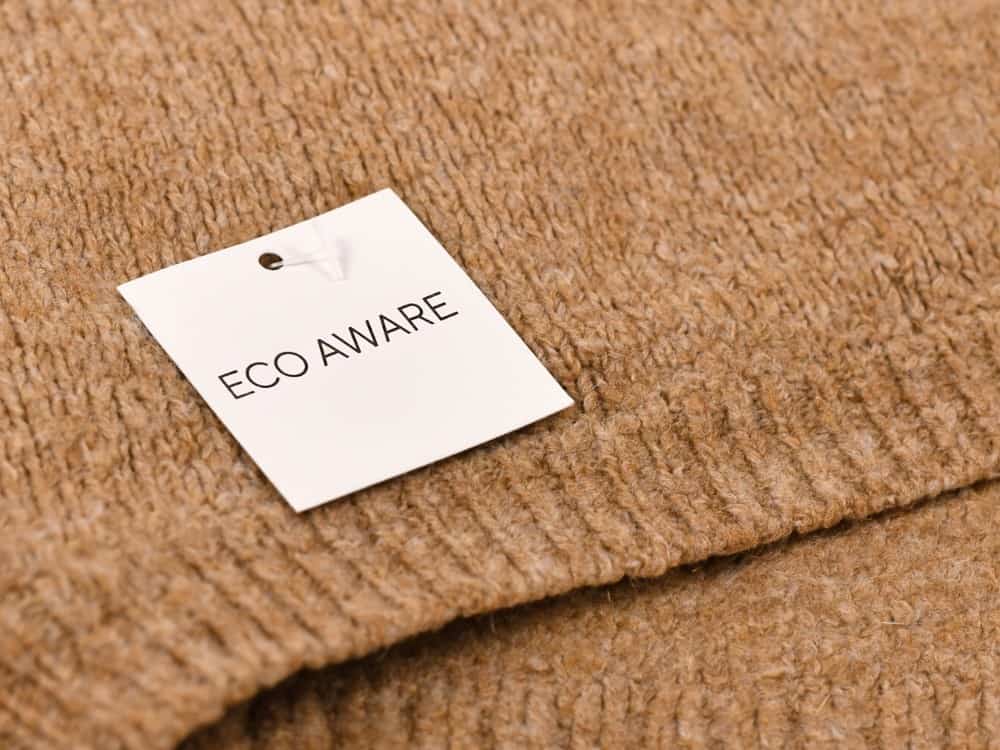Are lab grown diamonds more ethical than natural or mined diamonds? You know what they say, diamonds are forever … but can you wear the bling without the ethical baggage?
If Leonardo DiCaprio’s character in the film Blood Diamond has anything to say about it, it would surely be, no.
Let’s be honest, despite his less than perfect Zimbabwean accent, his story opened our eyes to just some of the ethical atrocities within the diamond industry, including land degradation, child labor, and armed military conflict.
But is that the end of the road for a conscious consumer looking for some sparkle or could lab grown bling be a guilt free option?
The debate on lab grown diamonds being an ethical alternative to natural diamonds has now been raging for many years and the short answer is that the jury is still out.
We’ll take you through the most important considerations for each and provide some guidance on how to choose a more ethical diamond (or perhaps convince you that you don’t need one at all).
Contents: Lab Created Diamonds
- What Are Lab Grown Diamonds? Jump to section
- How Ethical Are Lab Grown Diamonds? Jump to section
- How To Find Ethical & Sustainable Diamonds Jump to section
What Are Lab Grown Diamonds?
Starting with the ultimate diamond-producing lab (aka the Earth), natural diamonds are formed by constant geological pressure over millions of years. A diamond, in simple terms, is just a piece of highly heated and pressurized carbon or really really expensive coal.
Give some smart people in white lab coats a clean laboratory with some super powerful machines, and they can basically mimic Earth. Using the same processes that our planet uses, lab-grown or man-made diamonds are created in two ways:
- By using heat and pressure: A High-Pressure and High-Temperature (HPHT) machine applies intense pressure and heat to a diamond seed (a tiny slice of diamond which can also be man made) after it’s been placed in pure carbon. The heat causes the carbon to melt and the diamond forms around the seed. Once cooled, the diamond is ready for polishing.
- By applying a chemical vapor: A Chemical Vapor Deposition (CVD) is applied layer by layer to the diamond seed. Contained in a chamber, the diamond will continuously get bigger and bigger until it’s ready to be removed and polished.
Scientists have been able to recreate the processes that take typically millions of years in just days to weeks.
Can You Tell The Difference Between A Lab-Created Diamond And A Real Diamond?
Lab-grown and natural diamonds have the same chemical and physical properties. Unless you have access to a fancy microscope, jewelry buyers are unable to tell the difference between a real diamond and one that’s created by scientists. And practically speaking, their quality in terms of strength and cutability is virtually identical.
Lab-created diamonds aren’t ‘fake.’ They aren’t imitation diamonds, like moissanite or cubic zirconia. They have the same properties of natural diamonds but are just made in a smaller, more efficient lab.
However, their ‘fakeness’ is contested—namely by some of the big names in the diamond industry. Big companies certainly aren’t likely to be happy with this new type of bling but the FTC has indeed ruled that lab-grown diamonds are real.
Are Lab Grown Diamonds Cheaper Than Natural Diamonds?
Lab diamonds are typically 30% cheaper than their natural counterparts, though this gap might be increasing with more lab grown supply. The costs of processing the diamond (polishing, cutting, and inspection) are the same, but the costs associated with extraction, that is mining, are significantly reduced.
Are Lab Grown Diamonds Valuable?
There are several facets when it comes to the cost of a lab-grown diamond—and a lot of disagreement in the industry.
The cost of production for lab-grown diamonds will continue to drop as scientists continue to make the process more efficient and, as such, it’s likely that the value of these diamonds will also continue to drop.
However, some argue that natural diamonds aren’t as rare and unusual as many big jewelry brands would like us to believe. And in fact, most of these diamonds also tend to depreciate in value over time.
In the case of lab-grown diamonds, while they do carry some inherent value, some say their resale value drops substantially.
All things considered, neither type of diamond is truly ‘rare.’ Similarly, neither type of diamond is truly abundant. That’s why many people look beyond the financial value of the stone to really appreciate the value of man-made diamonds.
And let’s keep in mind that the value attributed to diamonds is in essence “man-made”, manufactured entirely by the diamond industry – we are all at the end of the day signaling our social or economic status with our sparkly ring finger, and we actually could choose to fulfill our biological need to signal through other means.
We (the human race) decide what has value.
How Ethical Are Lab Grown Diamonds?
Ethical and sustainability related considerations for lab grown diamonds include:
Energy & Carbon:
Lab grown diamonds use an enormous amount of energy in their production. According to a SPG Global Report, the adjusted average energy requirement of producing one carat is 591 kWh. This contributes to 511 kg of greenhouse gas emissions per polished carat, on average. Which is enormous.
These numbers are averages so can vary quite substantially depending on the efficiency of the machines or processes used and on whether renewable energy is used. Given most lab-grown diamonds are grown in China, one could assume that most lab-grown diamonds are created using coal however, this is shifting rapidly as China phases out coal.
Labor & Human Rights:
Much like every other industry, when products are made in countries with lower protections for workers, human rights abuses do take place.
In the case of diamonds, irrespective of whether the diamonds were mined or lab-grown, most the cutting and polishing happens in India where protections are generally inadequate for preventing cancer and silicosis caused by the dust produced in the process.
Employment & Economic Development:
Some say that taking meaningful employment away from communities that depend on diamond mining is part of the ethical conundrum. The argument is that buying from traceable, ethical mining operations is better than directing the lion’s share of the economic benefit to those in more developed countries with higher education and more opportunities.
Traceability:
Lab grown diamonds can be fully traceable. This makes it easier for discerning diamond shoppers to find better, more sustainable diamonds.
Greenwashing:
Lab-grown diamonds have risen to stardom and touted as the more sustainable and ethical option. As we’ve seen above, this cannot be a blanket statement as not all lab-grown diamonds are created ethically and/or sustainably.
Natural Diamonds Vs. Lab-Grown Diamonds: Which is More Ethical and Sustainable?
To fully understand how ethical lab-grown diamonds are, we need to compare their ethical and sustainable attributes against natural diamonds.
Energy & Carbon:
According to the same SPG Global Report we referred to above, natural diamonds on average produced 160 kg CO2e per polished carat which is a lot less on average than lab-grown diamonds.
Labor & Human Rights:
How much time do you have? Let’s just say the natural diamond industry has a long, long history of abuse. Blood Diamond doesn’t even touch on many of the issues. Sadly, many of these issues remain in the industry today. Unfair wages, unsafe working conditions, child labor, forced labor, you name it – the natural diamond industry has it.
Like all raw material sourcing, this issue is not true of every mine and of course there are mines that do the right thing by their employees.
Employment & Economic Development:
Absolutely, one could argue that the mining industry brings jobs and economic development to numerous communities around the world and if done fairly, this is a good thing.
Greenwashing:
There have been numerous claims of greenwashing in the natural diamond industry, especially when it comes to claims of traceability and being conflict-free.
Environmental degradation:
We need to add this important consideration when it comes to mined diamonds. Remember how natural diamonds are the result of geological pressure?
Well, for this pressure to exist, the diamonds have to be under a significant amount of rock. That said, the mines in which they are found are typically deep—like deeper than the height of the Empire State building deep.
For miners, this means a tremendous amount of earth moving.
Every carat is associated with the movement of up to 1750 tons of earth. Using some basic math and the fact that we mine around 148 million carats of diamonds every year, that means that 259 trillion tons of earth are moved every single year for the sake of some bling.
This number, and the fact that we can see these mines from space, make it easy to picture the deforestation and soil erosion that’s caused by diamond mining.
And it doesn’t stop there. The extractive process is large on every scale. It requires vast amounts of water, chemicals, and a significant amount of energy –and not just electricity, but petroleum-based non-renewable hydrocarbons such as oil, diesel, gas, and petrol (which in turn require even MORE mining).
And then there’s the devastation caused by the various methods of diamond mining. Each type of mining presents its own unique set of environmental risks.
- Open Pit Mining: Considered the most threatening of all the mining strategies, this involves the removal of healthy topsoil from fertile farmland. The diamonds are extracted, leaving massive pits behind, and then miners move onto new areas.
- Often, the pits are full of stagnant water which becomes a breeding ground for mosquitoes and other waterborne viruses. The world’s largest Superfund site, the Berkeley Pit in Butte Montana (a copper mine), is an example of strip mining at its very worst. This particular pit now threatens to overflow and permanently alter the area water table.
- Another example is the Big Hole in in Kimberley, South Africa, claimed to have been excavated by hand, starting in 1871. The mine’s impact on miner’s health was devastating.
- Underground (Hard Rock Mining): Underground hard rock mining, even when on a small scale, has been associated with significant levels of land degradation, flora and fauna loss, and the contamination of surface and groundwater. For mining like this, 126 million gallons of water (per carat!) are required to move the earth. Dangerous contaminants are introduced (like mercury) which can also have grave health effects on workers.
- While we’re talking sustainability here, it’s worth noting that underground mining is incredibly dangerous work. South African diamond miners have an overall 20% higher mortality rate compared to the general populous. The same study found that underground mining was a statistically significant predictor in this increased mortality rate.
- Marine Diamond Mining: Marine mining is the most common method today and involves the use of massive ships with powerful drills. Like with offshore oil drilling, habitats, and sea life are decimated—including larger species like whales, dolphins, sharks, and seals.
- Coastal Mining: Large-scale excavation and modification also takes place along coastal areas, where plant life, soil, and sand are removed before mining begins.
- Alluvial (Artisanal) Mining: Since some diamonds are found in deposits with a large surface area, it’s difficult to mine them industrially. For this reason, extraction is done by hand by individuals or families (and often with little regulation). Due to its informal nature, there is likely (typically) little regard for environmental impact and biodiversity loss, water deterioration, and soil degradation is common.
In our eyes, lab-grown diamonds have the potential to be more ethical and sustainable overall given lower environmental degradation and better traceability.
However, it’s clearly possible to have a more ethical natural mining operation than a badly run lab-growing operation and visa versa. So really, it comes down to where the diamonds are sourced and the overall transparency of the diamond producers.
How To Find Ethical & Sustainable Diamonds
Here’s what you can consider when on your search for the best bling for both people and the planet.
- Consider not buying any at all
- Opt for a second hand diamond or alternative gemstones
- Look for transparency: Irrespective of whether the diamond was mined or made, we want to know where, when, how and by whom it was made
- Look for lower risk countries: For mined diamonds, opt for diamonds that are genuinely conflict free and traceable and were mined in Canada, Botswana, Australia or Borneo
- Look for renewable energy: For both types of diamonds, you’ll want to know the carbon emissions have been massively reduced through more efficient processes and renewable energy
This is a tricky one and as is the case with so many products, it can be difficult to make the best, most ethical choice. We hope this guide to lab-grown diamonds helps!









